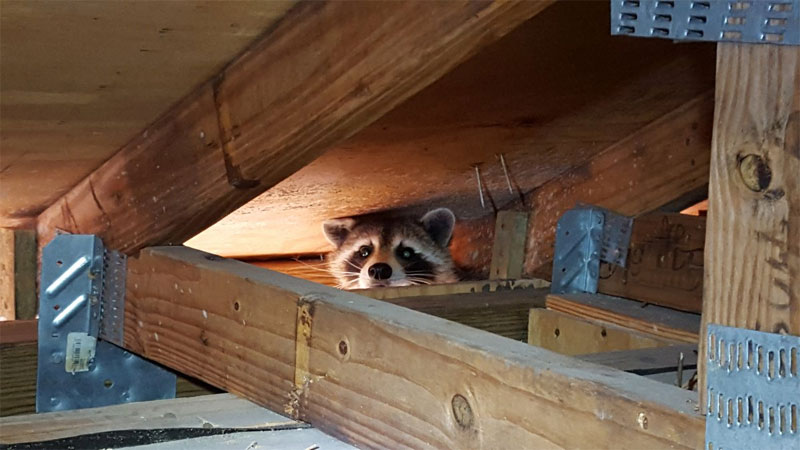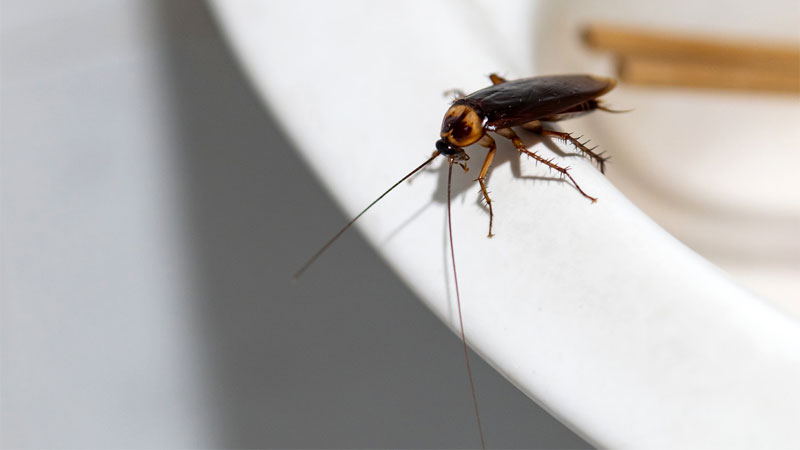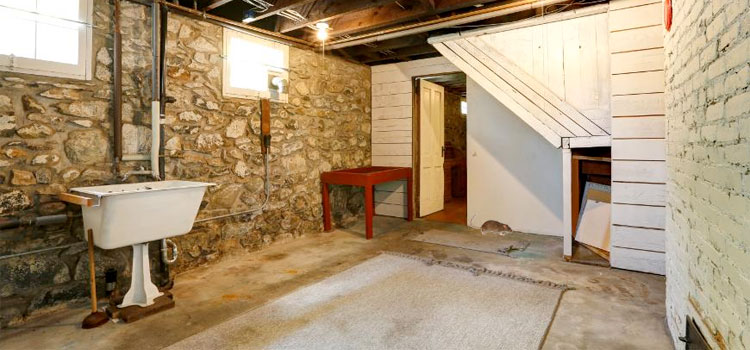When you hear bumps in the night or strange sounds coming from the walls, you can’t always identify the critter without further investigation. Be they common room bugs or uncommon invading mammals, proper identification is the first step in removal.
While we wish we could give you some foolproof methods to guess the critter based on some vague signs, that’s not very realistic. The good news is that we can at least help you narrow down the list of potential critters. This will make it easier to know what products to buy or whether you need to hire a professional.
Common Pests Room by Room
Here’s a list of various rooms and which critters commonly infest them. This will give you a good starting point for identifying and ultimately dealing with those critters.
Almost every home or apartment will contain some or all of these rooms. As many of these rooms are either rarely used or often contain food crumbs, they can be highly prone to infestations. Note that pests which can infest multiple rooms will only have details given once to avoid repetition.
Pests in the Attic
The attic is a wonderful haven for all sorts of critters. It’s quiet, warm, and has lots of potential nesting material, such as exposed insulation or packing materials. Access points tend to be pretty common, and overhanging trees make it easy for many critters to make it inside.
Bats
Bats are very quiet invaders and will roost in your home indefinitely. They can squeeze through spaces as small as 1/2 inch. However, they’re not destructive like most pests.
Instead, the big threat they pose is in their guano. It can be small pellets or resemble bird poop, usually with bits of insect in them. Guano can build up quickly and pose a major health risk due to the many diseases it may transmit.
If you suspect you have bats, you can apply one-way exclusionary devices during the day so they can get out but not back in. However, if you plan to remove the bats by force, it’s best to call in a professional due to the risk of rabies.
Cluster Flies
It’s pretty hard to miss a cluster fly infestation. Swarms of the little buggers will set up residence in your walls, attic, or general living areas. Their lazy flying and sheer numbers are enough to drive most people mad. Even worse, like all flies, they lack the evolutionary intelligence to fly out of an open window.
The good news is that they love getting themselves killed in traps or feeding your carnivorous plants. You can also use bug sprays or a good old flyswatter if the mood strikes.
Mice and Rats
There’s very little distinction between mice and rats – to the point there’s an ongoing scientific debate on whether or not they’re actually one and the same. The most obvious difference is in size (which isn’t always the case).
Mice and rats are excellent climbers and prefer spaces people are less likely to travel. These small rodents can easily gnaw through even concrete, and can fit through quarter-sized holes.
Rats that like to hide in attics are commonly referred to as roof rats, but any rat can find their way into an attic. You can identify a mouse or rat infestation by their droppings, which look like brown-colored candy sprinkles (like the ones on a donut or cupcake), with rat droppings being a bit larger.
If you suspect mice or rats are hiding in the attic, you can set live traps. Just remember, a female may have given birth, so you’ll need to locate any nests and remove them.
Raccoons
One of the most innovative and intelligent critters you definitely don’t want in your home, raccoons are excellent climbers and will literally disassemble bits of roofing or paneling to gain entry. They’re avid scavengers and will feast on your trash or any food you leave out. But it gets worse, as raccoons can carry a number of diseases, most notably rabies.
They can be rather noisy when scavenging and also tend to chitter if there’s more than one, which can be the best giveaways to their presence outside of actually seeing one. If you suspect you have raccoons in your home, don’t try to approach them. Instead, call a professional, as these critters can usually figure out if you’re laying a trap for them.
Snakes
Contrary to popular belief, snakes are really great climbers and can use access points to get into almost any part of your home to find warmth or food – even the attic. Snakes are really hard to identify unless you manage to get one that’s molting (shedding).
They’re really quiet and very little threat to the house itself. However, some species are venomous and can harm your pets or cause an allergic reaction with a few being life-threatening. They can also cause foul odors. Fortunately, harmless garter snakes are often most common.
To check for snakes, sprinkle flour on the floor. A wavy path will mean snakes, while paw prints may help identify other critters. Use traps or hire a professional to avoid a potential run-in with a deadly species.
Squirrels
These cute critters aren’t so attractive once they get into your attic. They’re professional chewers and will not only enlarge access points or munch on the wooden supports, but may also chew into wires, causing a fire hazard.
Squirrels (whether ground, tree, or flying) are most active in the day, and you might hear them skittering about. Live traps work best, followed by sealing up any entrance points and cutting back any tree limbs they may have used for access.
Pests in the Bathroom
The biggest draw to a bathroom is the amount of moisture, which can attract a whole host of pests.
Ants
A number of ant species like to invade homes, and may build colonies in walls, especially drywall. The most common rooms are kitchens and bathrooms, but you’ll find them anywhere there’s food and moisture, from the basement on up.
Ants will generally make their presence known simply by the somewhat orderly columns of workers as they travel along invisible scent trails to collect food for the colony. Bait traps remain the most popular solution, although you can also resort to other methods if you want to get more hands-on.
Centipedes
If there’s one thing this author can’t stand, it’s the centipede. They’re fast and perhaps one of the creepiest crawlies that will sneak indoors. Oddly enough, these common room bugs are beneficial and enter your home in search of prey.
Centipedes feed on everything from ants to spiders and can help keep the numbers down. However, that doesn’t make them welcome, and you’re likely to find them in any room that has moisture, especially the basement and bathroom.
If you’re quick, you can simply vacuum up or squish a centipede on sight. However, there aren’t a lot of commercial products to handle these pests. In the (very) rare case of an infestation, you’ll need to hire a professional.
Related: How to Keep Millipedes Away
Cockroaches
For most people, roaches are pure nightmare fuel, and for good reason. These pests can breed quickly and carry a number of diseases, not to mention the way they dart about.
There are many types of cockroach that can invade your home, but all of them love moisture and free food. As a result, they’re quite common in kitchens, bathrooms, and basements, but can also invade your living room or bedroom if there’s food to be had.
If you’re lucky enough not to see them, a cockroach infestation can be identified by smelly smears, shed shells, and prolific poop. You can use bait or glue traps to great effect, but may need to call for some professional help if things get too out of hand.
Drain Flies
These little nasties look more like tiny moths than flies. Getting a drain fly infestation is usually a sign your septic system is damaged. They’re most commonly found in the bathroom, but may also find their way into your basement or kitchen through drainpipes.
Thankfully, eliminating these critters is usually a matter of cleaning the drains, although repeat infestations may signal the need for a plumber to check your sewer lines.
Silverfish
Most commonly seen in the kitchen, silverfish absolutely love moisture and will readily infest your bathroom, basement, or any other spot where mold or mildew is present.
As with other pests that tend to hang out in the kitchen or bathroom, you’re just as likely to spot them as you are to identify them by the damage they cause. The good news is that there are a number of traps out there you can use to deal with them.
Spiders
Like centipedes, spiders are avid hunters and will enter your home in search of prey. Only two species of spider are deadly in the US, although their bites can cause allergic reactions that are sometimes pretty severe.
Don’t rely on the presence of webs to spot a spider, however. Many common types, such as jumping spiders and wolf spiders, don’t build webs and instead chase down their prey.
Pests in the Basement (or Crawlspace)
Dark and quiet, there are quite a few species that will take up residence in the basement or crawlspace under your home. This area is especially welcoming as it often provides moisture which can result in an entire pest ecosystem if you’re not careful.
Ants
While not as common in basements as in crawlspaces, you’re more likely to run into carpenter ants than other species here.
Centipedes
As with bathrooms, centipedes can find plenty of prey in a basement.
Cockroaches
Since cockroaches love moisture and dark places, basements are a natural for them to congregate.
Drain Flies
Look for these around flood drains or wash basins.
Mice and Rats
The lack of people and many places to hide make these areas a great nesting spot for small rodentia.
Silverfish
Basements are often musty and damp, making them a prime feeding ground for silverfish.
Spiders
Where there’s prey, there will also be the hunter. Spiders love basements and crawlspaces, especially the dangerous black widow.
Pests in the Bedroom
The bedroom is a total hotspot for pest activity. In addition to several pests that can be mistaken for bed bugs, there’s a whole host of other critters that can invade.
Ants
While not as common to see in the bedroom, ants will go anywhere you’ve left crumbs. All it takes is one explorer finding a morsel to get an entire colony’s attention.
Bats
While rare, bats can sometimes find their way into an open bedroom window at night and get confused.
Bed Bugs
One all too common misconception people have about bed bugs is that they’re limited to the bedroom. In reality, these frustrating critters will go anywhere there are warm bodies that stay parked for a period of time.
Be ready for them to end up in all sorts of furniture and to hitch rides throughout the house. As they hate light and flee from movement, the first signs you might have are bite marks, little dark spots on your sheets from their frass, or their exoskeletons which they’ve shed.
Heat is the best killer of these little monsters, but there are also many chemical remedies. Be ready for a bit of a war, however, as the eggs are resistant to all but heat. An exterminator may be the only option if the infestation isn’t caught early enough.
Carpet Beetles
A lot of bugs like to make your carpets home, one of which is the carpet beetle. Available in a variety of shapes and colors, carpet beetles are known to cause people to break out in some really nasty rashes.
They’re not too good for your carpets, either. The good news is that a lot of non-toxic home remedies actually work on these critters.
Cockroaches
Dirty clothes piles and crumbs from that midnight snack are great draws for roaches.
Dust Mites
Dust mites take up residence in your bed before you even buy it, and they (usually) coexist with humans quite peacefully. In fact, they consume all the dead skin cells you shed every night.
However, their poop makes up a high percentage of the dust in your home and can trigger a range of dust-related allergies. Simply cleaning and using air purifiers will usually be enough to counter these side effects.
Fleas
Fleas are one of the more annoying pests out there and have many of the same qualities as bed bugs, such as the ability to go long periods without food and pesticide-resistant eggs. However, they’re not as shy about light and will bite humans as well as pets.
There are a lot of ways to fight fleas, but you may need to resort to bug bombs and foggers if you don’t catch the infestation early on.
Moths
Several species of moths are known to infest rooms where there’s plenty of fabric, especially the bedroom. The caterpillars will munch on drapes, carpets, and clothing, resulting in nasty holes. If you don’t see an adult flying around, those holes are a sign you might have a moth problem.
Unfortunately, traditional remedies such as mothballs aren’t going to kill the moths, so you’ll need to get physical in most cases.
Spiders
With all the bugs that congregate in bedrooms, it’s no surprise to find spiders here as well.
Pests in the Dining Room (or Living Room)
These common areas are less likely to have pests than other rooms for the very same reason they can attract pests – lots of human traffic. This is especially true of the dining room or den where food crumbs tend to accumulate.
Ants
Where there’s food, ants will eventually turn up.
Bed bugs
While bed bugs are most often found in bedrooms, other rooms are not off limits. The chance of bed bugs taking up residence on a couch increase significantly after a husband loses an argument to his wife.
Carpet Beetle
Crumbs plus carpet equals carpet beetles as reliably as two plus two equals four.
Christmas Tree Bugs
While not any single pest, be aware that the holiday guest list can include a number of Christmas tree pests if you bring home a live tree.
Cockroaches
The crumbs paired with plenty of hiding places make a good feeding spot for roaches.
Dust Mites
Not only do they live in your mattress, they also tend to reside in all other types of upholstered furniture and even carpets.
Fleas
Fleas love pets and will congregate wherever there’s warmth and the smell of blood.
Flies
Flies of all sorts can invade your living areas, especially cluster flies, fruit flies, gnats, and houseflies. In most cases, the flies have found their way in through an open window and are incapable of figuring out how to go back out.
They tend to make their presence known and are easily dealt with using a wide range of physical and hands-off methods with a Bug-a-Salt being the most fun option.
Plant Pests
Several common plant pests can find their way into your home if you have houseplants, such as aphids, fungus gnats, mealybugs, scale, spider mites, thrips, and whiteflies.
Each of these pests are different, yet they all tend to feed on your plant’s sap and most remedies will work on the lot of them. Keeping your plants healthy and using neem oil will usually both stop and prevent these pests from being a problem.
Spiders
As usual, spiders will follow other pests.
Stink Bugs
These tiny little tanks are terrible fliers and your first sign that one’s around will be the meaty thunk as it smacks into some random surface.
You don’t want to kill these bugs indoors, as that creates a really nasty odor which can give skunks a run for their money. Instead, the best thing you can do is to simply capture it and release the little bugger outside.
Pests in the Kitchen
Due to the presence of both food and water, the kitchen tends to be “pest central”. Literally every bug we’ve listed thus far can be found in the kitchen, as well as mice and rats.
Keeping a clean kitchen and having some carnivorous plants can help greatly reduce the risk of infestations, whether it be cockroaches, grease ants, or anything in between.
See Also: What Are Those Tiny Black Bugs in the Kitchen?
Pests in the Garage
It’s becoming quite common for homes to have a built-in attached garage or for a passageway to be built between the house and a formerly detached garage. Pests (especially flies) commonly found in the basement will also be found here with a few notable additions.
Rodents
We’ve talked a lot about mice and rats in the house, but the garage is another matter entirely. In addition to these two common critters, squirrels, chipmunks, prairie dogs, and even rabbits can take up residence in a garage. Chase them out and seal any entry points you can find.
Spiders
If you have a garage, you’re going to have spiders whether you see them or not. But, this is where you actually do want to have a few harmless spiders as they help control other pests including flies and mosquitoes.
However, some spiders including black widows and hobo spiders can be a problem so a sniper approach to eliminating them is best, which will allow the harmless spiders to do their job.
Strays
Stray cats and dogs can often find their way into a garage for shelter. While not as common with dogs (due to their generally larger size), stray cats are frequently found hiding or nursing their kittens in someone’s garage.
Simply usher the squatter out and seal up any entry points or (preferably) adopt them.
Pests in the Office/Study/Library
Similar to common living areas, crumbs can attract the same invaders as those rooms.
However, the presence of paper in large quantities can make these room highly attractive to moths, and their caterpillars (especially the infamous bookworm) can do serious damage if you don’t deal with them before they can breed.
Pests in the Solarium/Conservatory
Finally, we have to mention the great convergence of indoors and outdoors. These rooms can attract rodents and many of the same pests that infest kitchens and bathrooms.
However, plant-related pests are the biggest risk here, and you may find slugs, snails, crickets, and grasshoppers sneaking in. Handle these pests the same way you would in an outdoor garden setting and try to find and seal any potential entry points.
- How to Get Rid of Hawks - March 8, 2024
- How to Get Rid of Pill Bugs (Rolly Pollies) - March 1, 2024
- How to Get Rid of Groundhogs (Woodchucks) - February 5, 2024








